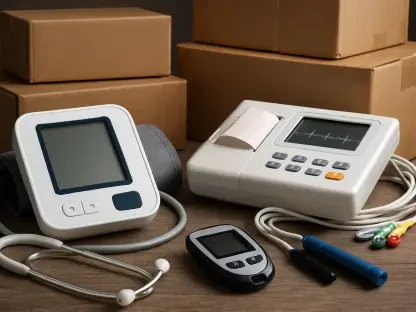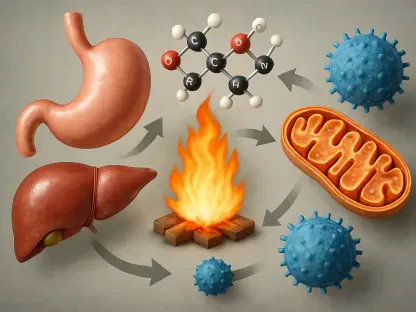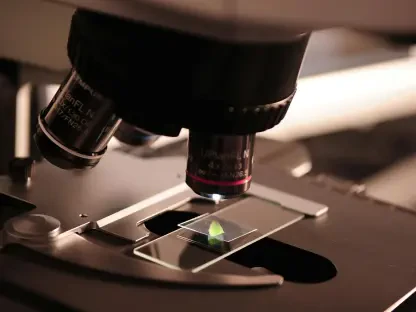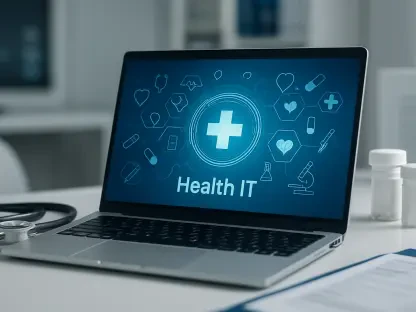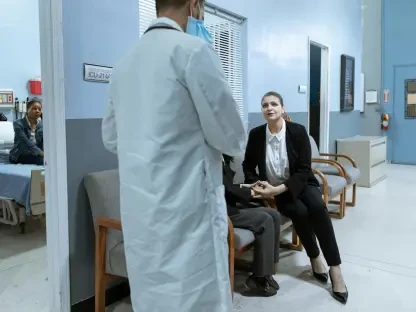James Maitland is a renowned figure in the world of robotics and IoT applications in medicine, with a career dedicated to integrating cutting-edge technology with healthcare solutions. His passion stems from a desire to harness the potential of these advancements to improve patient care and streamline medical processes. Today, we’ll delve into his insights on the evolving role of technology in healthcare and the challenges and opportunities that lie ahead.
Can you tell us more about your role as a community health worker and what led you to this profession?
My work mainly revolves around integrating robotics and IoT into medical applications, creating systems that can enhance diagnostics, monitoring, and treatment. My journey into this arena started with a fascination for robotics and a strong belief that technology could bridge gaps in healthcare delivery. I’ve always been drawn to solving complex problems, and the healthcare sector provides an endless array of challenges where technology can make a real difference.
What are some of the challenges you face in your daily work?
One of the primary challenges is aligning the rapid pace of tech innovation with the slower, more cautious movement of healthcare regulation and implementation. Technologies evolve quickly, but adopting them into practice requires time to ensure safety and efficacy. There’s also the issue of interoperability—the need for different systems to work seamlessly together, which can be quite a hurdle when working with diverse technologies.
How does your work impact the families and individuals you support?
Through technology, we’re able to provide more personalized care, which significantly impacts families by reducing the need for hospital visits through remote monitoring and early intervention. This not only eases the burden on patients and their families but also provides peace of mind, knowing that there are robust systems in place to support their health needs continuously.
Can you explain the significance of the expression “an ounce of prevention is worth a pound of cure” in your work?
This phrase holds a lot of weight in my field. The technologies we develop are geared towards early detection and prevention. For instance, IoT devices that monitor patient vitals can alert healthcare providers to potential health issues before they become critical, which is much more efficient and cost-effective than treating conditions after they’ve worsened.
What specific skills or knowledge have you found most essential in your role?
An understanding of both technology and human biology is crucial. It’s not just about building the systems but also knowing how they interact with human health. On top of that, communication skills are vital as they help in translating complex technical details into understandable terms for medical professionals and patients alike.
How has the state’s backing out of initiatives affected your work and the community you serve?
While my work is global, I observe that such rollbacks hinder the broader goal of harmonizing tech with healthcare. When states pull back, it creates a ripple of uncertainty that affects funding, innovation, and public trust. Consistent support is needed to fully integrate technology into healthcare systems and maximize the benefit for communities.
What were your expectations when the state planned to professionalize community health workers?
The hope was that professionalization would bring standardization to training and approaches, ensuring more robust and reliable outcomes. It was anticipated that this would uplift the workforce, provide better compensation, and improve overall health outcomes by having more skilled personnel on the ground.
How would standardizing training and certification help you and your colleagues?
Standardization ensures everyone is on the same page, which is critical when integrating multifaceted technologies into healthcare. It also validates the skills and capabilities of health workers, encouraging continuous professional development that can adapt alongside technological advances.
What barriers exist for community health workers to receive training and certification in California?
A significant barrier is the financial cost of training programs. Additionally, the requirement for prior experience or degrees can limit entry for many who have the passion and skill but lack formal credentials. There’s also the geographical concentration of training facilities, leaving many areas underserved.
Can you share your thoughts on the elimination of the certification program?
It’s disheartening as it stalls progress and undermines efforts to unify the workforce under a set standard. Without certification, there’s less accountability and recognition, discouraging individuals from pursuing this career path and potentially impacting the quality of care provided.
How do uneven billing requirements from health plans impact community health workers like you?
Inconsistent billing is a major obstacle because it creates uncertainty in reimbursement. When health plans have different requirements, it complicates the administrative process, taking time away from core, patient-centric tasks, and causing financial instability within the organization.
In what ways could fair wages alter the landscape for community health workers?
Fair wages would attract more skilled workers to the field and reduce turnover rates. It would acknowledge the critical role they play and could lead to better job satisfaction and improved quality of care, ultimately benefiting the communities they serve.
Can you discuss your experience with Medi-Cal reimbursements and how they affect your work?
While not directly involved in Medi-Cal, I see parallels in tech reimbursement issues. It’s essential for reimbursements to reflect actual work and outcomes. Inadequate compensation for the time and expertise of healthcare workers poses a threat to sustainable service delivery.
How does the uncertainty in reimbursements and pay influence your ability to focus on community health?
Uncertainty diverts energy and resources from innovation to addressing financial sustainability, hampering progress. Instead of pushing boundaries in healthcare delivery through technology, efforts get redirected towards managing immediate, financial concerns, slowing advancement in community health.
Why do you think the services provided by community health workers are underutilized?
There’s often a lack of awareness about the full scope of what these workers offer. Additionally, bureaucratic hurdles and inadequate integration into existing healthcare systems mean that their potential to complement traditional medical practices isn’t fully tapped into.
How crucial do you think outreach efforts are, especially considering recent political challenges?
Outreach is more critical than ever, especially as misinformation and fear around health access grow. Community health workers can be key in fostering trust and disseminating accurate information, ensuring that all individuals understand how to access and benefit from healthcare services available to them.
Have you noticed any changes in community trust or engagement due to immigration issues affecting healthcare access?
Yes, particularly in communities heavily impacted by immigration policies. Fear and mistrust can deter individuals from seeking necessary healthcare. This is where the role of mediators and trusted figures is vital to bridging the gap and providing accessible and relatable communication about healthcare rights.
What do you believe is needed from the government to ensure community health workers are effectively integrated into the healthcare system?
The government needs to recommit to supporting and professionalizing this workforce through consistent funding, training programs, and clear paths for career advancement. There’s also a need for integration strategies that clearly delineate the role of these workers and how they fit within the larger healthcare framework.
Do you see any potential for growth and recognition in your career, given the current landscape?
Absolutely. As the tech and healthcare sectors continue to converge, there’s immense potential for growth. The ongoing advancements in technology promise to transform healthcare delivery, and being at the cusp of such developments is an exciting place to be.
What message would you like to give to policymakers about the value of community health workers?
Policymakers should recognize that community health workers are an indispensable aspect of our healthcare system, bridging the gap between technology, policy, and patient care. Investing in their training, fair compensation, and integration will yield significant dividends in public health outcomes.


